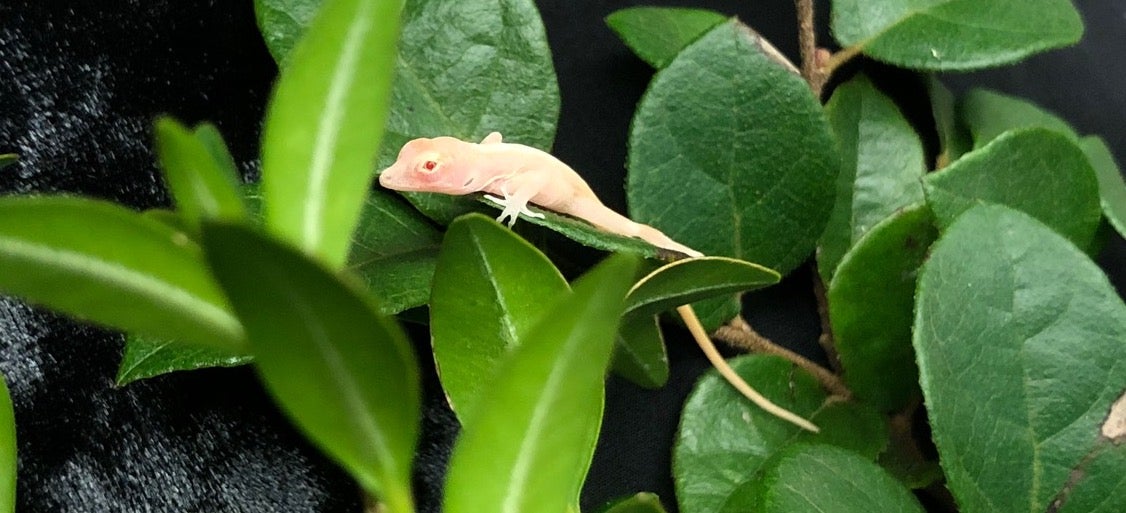CRISPR turned these lizards into ghosts
Albino lizards? For spring? Groundbreaking

In an eye-popping reptilian first, researchers were able to genetically modify a reptile embryo using the gene-editing technique known as CRISPR. The technology has been used on fish, birds, amphibians, and even mammals, but this is the first time scientists have brought squamates—lizards and snakes—into the picture.
Squamates have been left out of most CRISPR experiments because of their unique sexual reproduction process. CRISPR works via a cocktail of specialized DNA strands and some enzymes that chop up other pieces of DNA, and it’s usually injected directly into an egg after it has been fertilized. But female squamates store sperm internally for long periods of time, and form fragile shells around embryos once they’re fertilized, making it hard for researchers to figure out exactly when to inject their carefully calibrated gene-editing mixture.
So scientists at the University of Georgia turned to the immature eggs—or oocytes—of female anoles, a type of lizard native to the Caribbean. How did they do it? Lizard surgery, complete with an operating table and anaesthesia. They accessed the anole’s ovary and gently injected the CRISPR cocktail into its oocytes. One of the genes modified in the study, which appeared Sunday on the preprint server bioRxiv, targeted the lizards’ pigmentation, providing a clear way to see whether or not the splicing worked on the embryos.

After some lizard mating, the female anoles began to lay fertilized eggs modified by CRISPR. Lo and behold, some offspring hatched as venerable ghost-lizards, shown above—the so-called “crispant” embryos, were a success.
Researchers are excited at what this could mean for the study of reptile genetics. As Jon Cohen reports for Science, one gecko biologist called the finding a “game changer.” This experiment has created a model for splicing the DNA of lizards and snakes without having to wait for embryo fertilization.
Douglas Menke, one of the study’s researchers, tweeted Monday: “We can finally explore the rich biology of gene function in reptiles.”